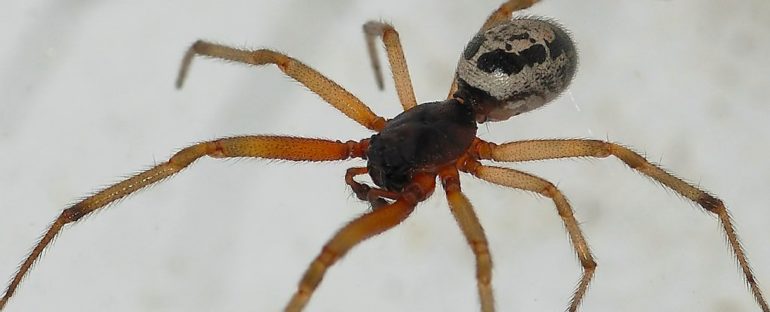A tiny brown invasive species of spider that’s creeping its way across the UK has a dangerous reputation for dissolving flesh, one that many experts have argued isn’t deserved.
There’s now compelling evidence suggesting that stories of the false widow spider (Steatoda nobilis) causing horrid skin infections has at least some basis in fact.
The false widow has called the UK home ever since it was spotted on its shores in the 1870s, most likely having hitched a ride from Madeira and the Canary Islands off the African coast.
In recent decades its range has widened to reach as far as Ireland. Given it loves a warm home as much as we do, encounters with the eight-legged migrant have only increased as more people have been forced to stay indoors in 2020.
Unfortunately, not all meetings are friendly ones.
“About 10 species of spiders common in north-western Europe have fangs strong enough to pierce human skin and deliver venom, but only one of them, the recent invasive noble false widow spider, is considered of medical importance,” says John Dunbar, a zoologist at the National University of Ireland (NUI) Galway.
In most cases, the worst you might expect from a false widow spider bite is a few hours of pain around the injection site, and maybe a day or two of stiff joints. No worse than a wasp sting, really.
It’s not the venom we need to be concerned about though – it’s the risk posed by bacteria found on its fangs.
Every now and then a story will hit UK headlines of an arachnid bite leaving victims with something far worse than a throbbing finger. Swollen hands, rotting holes of pus, threats of amputation, or even deaths have provided ample nightmare fuel.
Though formal identification isn’t always possible, the false widow typically cops the blame regardless.
Experts have understandably come to the spider’s defence, arguing that even if it is guilty of leaving a couple of holes, it’s the victim who supplies the necrotising bacteria by scratching at the site with dirty fingernails.
Hard evidence in support of either explanation has been scarce. So Dunbar’s team collected specimens of false widows along with some lace-webbed (Amaurobius similis) and giant house spiders (Eratigena atrica) from gardens and pathways, and took them back to the lab.
There the arachnids had their bodies and chelicerae (appendages by their mouth parts) swabbed for bacteria, and venom collected from the false widows.
The venom was used to test suggestions that the venom might help keep their fangs sterile enough to prevent them from inoculating victims with a dose of germs as they bite.
They don’t, it turns out.
RNA analysis did reveal a rich variety of microbes present on the spiders. Nearly a dozen genera were identified in total; out of 22 bacterial species found on false widows, 12 were potentially pathogenic to humans.
“Our study demonstrates that spiders are not just venomous but are also carriers of dangerous bacteria capable of producing severe infections,” says NUI Galway microbiologist, Neyaz Khan.
We’re not exactly talking plague-spreading monsters here, with most of the microbes of a variety you’d find just about anywhere (many including our own bodies).
There were, however, a handful that demonstrated worrying grades of resistance to antibiotics – that is where the real concerns arise.
“The biggest threat is that some of these bacteria are multi-drug resistant, making them particularly difficult to treat with regular medicine,” says Khan.
Thanks in part to our overreliance on antibiotics in both medicine and in maintaining the health of livestock, drug resistant ‘superbugs’ are a rapidly emerging threat we need to take seriously.
The good news is all of the microbes could be treated with a course of ciprofloxacin, a common antibiotic. For now, at least.
Knowing a spider’s bite can transfer superbugs shouldn’t make us fear spiders – it’s a risk we increasingly face from many facets of life, after all. Besides, the chances of a bite for the vast majority of people are small, let alone of developing a deadly infection.
But understanding the potential for a drug-resistant infection from even a couple of tiny punctures could help save lives.
“This is something that health care professionals should consider from now on,” says Khan.
This research was published in Scientific Reports.
